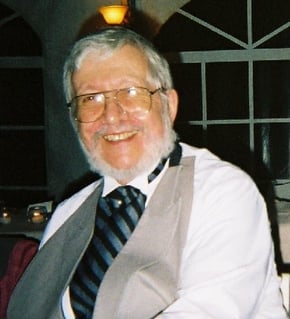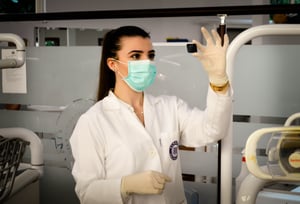The following is an excerpt from an essay by Dr. Robert Kurland, PhD, a regular contributor to the Magis blog, and creator of the website catholicscientist.com and Reflections of a Catholic Scientist. He worked in the field of nuclear magnetic resonance for over 40 years and has written frequently about the relationship between theology and quantum mechanics.
If one believes that everything can be explained by science (which I don’t), then only that which can be measured or observed in replicated experiments is “real.” Accordingly, many scientists regard the “soul” as a fictitious entity, since it is immaterial and has no measurable properties that can be observed in replicable experiments.
Rather than speaking of the soul, scientists focus on the mind as a function of what goes on in the brain. Such functions can be localized in various regions of the brain (see the figure below).
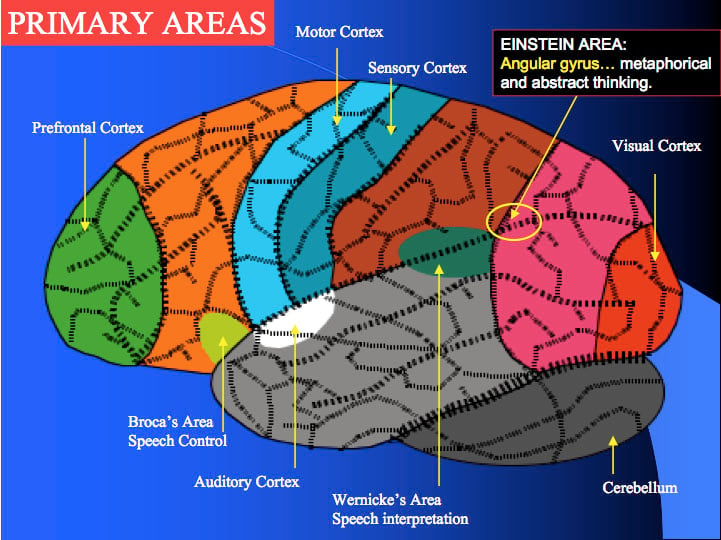 Brain Areas Controlling Different Functions / Wikimedia Commons
Brain Areas Controlling Different Functions / Wikimedia Commons
The various actions governed by the brain can be localized by observing behavioral changes when different parts are injured or with modern imaging techniques: MRI, SPECT, PET scans.
Scientific measurements of brain activity
“Interestingly, the average human brain weighs about 1.5 kilograms, has about 160 billion cells and about 100 billion neurons connecting the cells… One can look at the brain and see the incredible complexities and the miracles of the Divine …or one can respond … that this has nothing to do with G-d. Some people will be inspired with belief in the Almighty; others will claim that somehow billions of cells and neurons working together can be created through random evolution.” -Rabbi Dr. Warren Goldstein, “Jewish World Review,” 17 January 2014
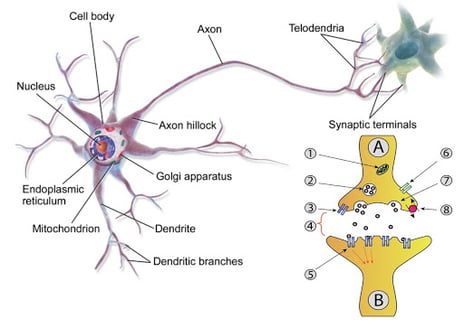 Diagram of a Neuron; inset is diagram of a synapse between transmitter (A) and receptor (B) neurons. 1: mitochondria; 2. vesicle containing neurotransmitter molecules; 3. autoreceptor gate; 4. synaptic cleft (3/10,000 of paper thickness); 5. neurotransmitter molecule receptor; 6. calcium gate; 7. fused vesicle releasing neurotransmitter molecules; 8. neurotransmitter molecule re-uptake pump.
Diagram of a Neuron; inset is diagram of a synapse between transmitter (A) and receptor (B) neurons. 1: mitochondria; 2. vesicle containing neurotransmitter molecules; 3. autoreceptor gate; 4. synaptic cleft (3/10,000 of paper thickness); 5. neurotransmitter molecule receptor; 6. calcium gate; 7. fused vesicle releasing neurotransmitter molecules; 8. neurotransmitter molecule re-uptake pump.
The basic unit of the brain is the neuron, depicted in the figure to the left. The average human brain contains about 86 billion neurons. They act by release of chemicals (neurotransmitters) to adjacent neurons across a synaptic junction (gap) and thereby generate electrical signals, nerve impulses, which travel along nerve fibers which in turn generate electrical signals, nerve impulses, which travel along nerve fibers, and so on.
Here’s a nice video explaining in more detail how nerve transmission works.
Since there is electrical activity in the brain due to nerve impulse transmission, this can be measured by EEG (ElectroEncephaloGraphy) which can be used to detect abnormal brain behavior, as in epilepsy. The state of water in the brain, and the corresponding state of brain tissue—normal or abnormal—can be studied by high resolution CAT scans (x-ray tomography), or MRI (Magnetic Resonance Imaging).
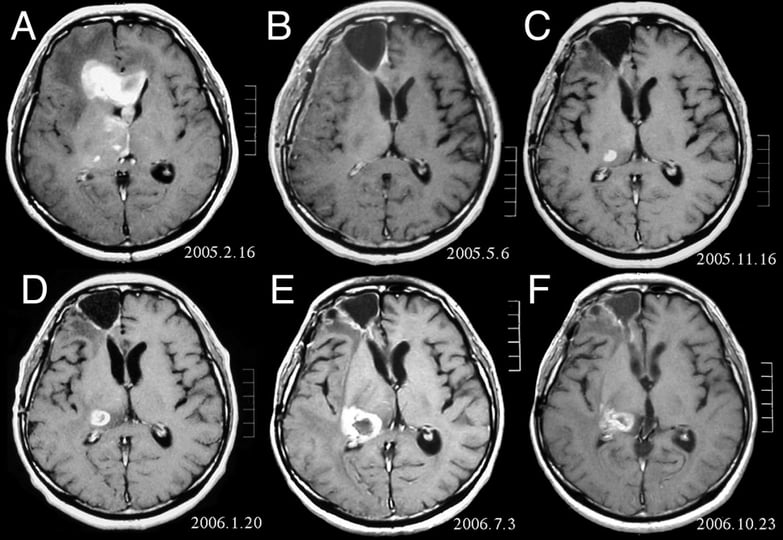 MRI of Brain with Tumor. A: Feb 2005, before treatment; B,C: Later in 2005, after treatment; D, E: Recurrence and treatment with radiotherapy F: Treatment with chemotherapy / Wikimedia Commons
MRI of Brain with Tumor. A: Feb 2005, before treatment; B,C: Later in 2005, after treatment; D, E: Recurrence and treatment with radiotherapy F: Treatment with chemotherapy / Wikimedia Commons
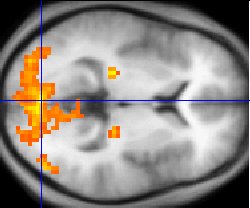 Functional MRI scan of visual activity in occipital lobe of brain / Wikimedia Commons
Functional MRI scan of visual activity in occipital lobe of brain / Wikimedia Commons
Chemical activity in the brain can be detected by Positron Emission Tomography (PET scans), Single Photon Emission Computed Tomography (SPECT), or functional MRI (fMRI). The first two techniques use radioactive tracers attached to molecules which will be metabolized (e.g. sugar molecules) at areas of localized brain activity. fMRI relies on increased blood flow to areas of the brain that are active; the blood contains oxygen molecules, which are paramagnetic and affect the MRI signal.
The picture to the right shows an fMRI scan of a subject watching “a complex moving visual stimulus and rest condition (black screen).” The activation (yellow-orange) is shown against a “regular MRI corresponding to the brain region scanned.” The left-hand side of the image corresponds to the occipital region of the brain, where visual images are processed.
Neuroimaging and the religious experience
Professor Andrew Newberg, Jefferson University Hospital, reported an interesting application of SPECT imaging. He showed, comparing images from religious (nuns, monks) and atheists, what brain regions—and thus what brain functions—are activated or deactivated by such religious acts as prayer, meditation, contemplation.
A detailed account of this is given in Professor Newberg’s web site and here. Briefly, the account is this: when people with long experience in contemplative prayer (for example, Franciscan Nuns) pray, the frontal regions of the brain (the area of higher mental activity, forethought, etc.) are activated and the parietal areas—which give a sense or orientation, bodily location—are deactivated. The latter result, according to Professor Newborn, corresponds to the feelings of losing self and of a oneness with the environment, feelings often associated with deep meditation and contemplation. On the other hand, the brains of atheists do not show such changes.
One point should be emphasized here. Although location of brain activity—locations correlated with function—can be found by these imaging techniques, such results in themselves do not give a complete understanding of mental activity, a proof that this activity is purely a consequence of material goings-on. It’s very much as if we have a computer with unlabeled inputs and outputs. After some trial and error we discover that one output goes to a display, one input for commands to move a cursor, etc. We’ve determined location and function, but we do not have a complete picture of what goes on in the internal workings of the computer.
A final thought
We can conclude, I believe, that scientific measurements, including modern imaging techniques—fMRI, SPECT, PET—show us where in the brain functions are performed and what electrical and chemical processes occur for such functions. However, they do not tell us why we know who we are, why “cogito ergo sum” is true for us, but not a computer.
Read More:
Hard-Wired for Faith: The Religious Experience and the Brain
23 Famous Scientists Who Are Not Atheists
Can a Scientist be Catholic? A Conversion Story
